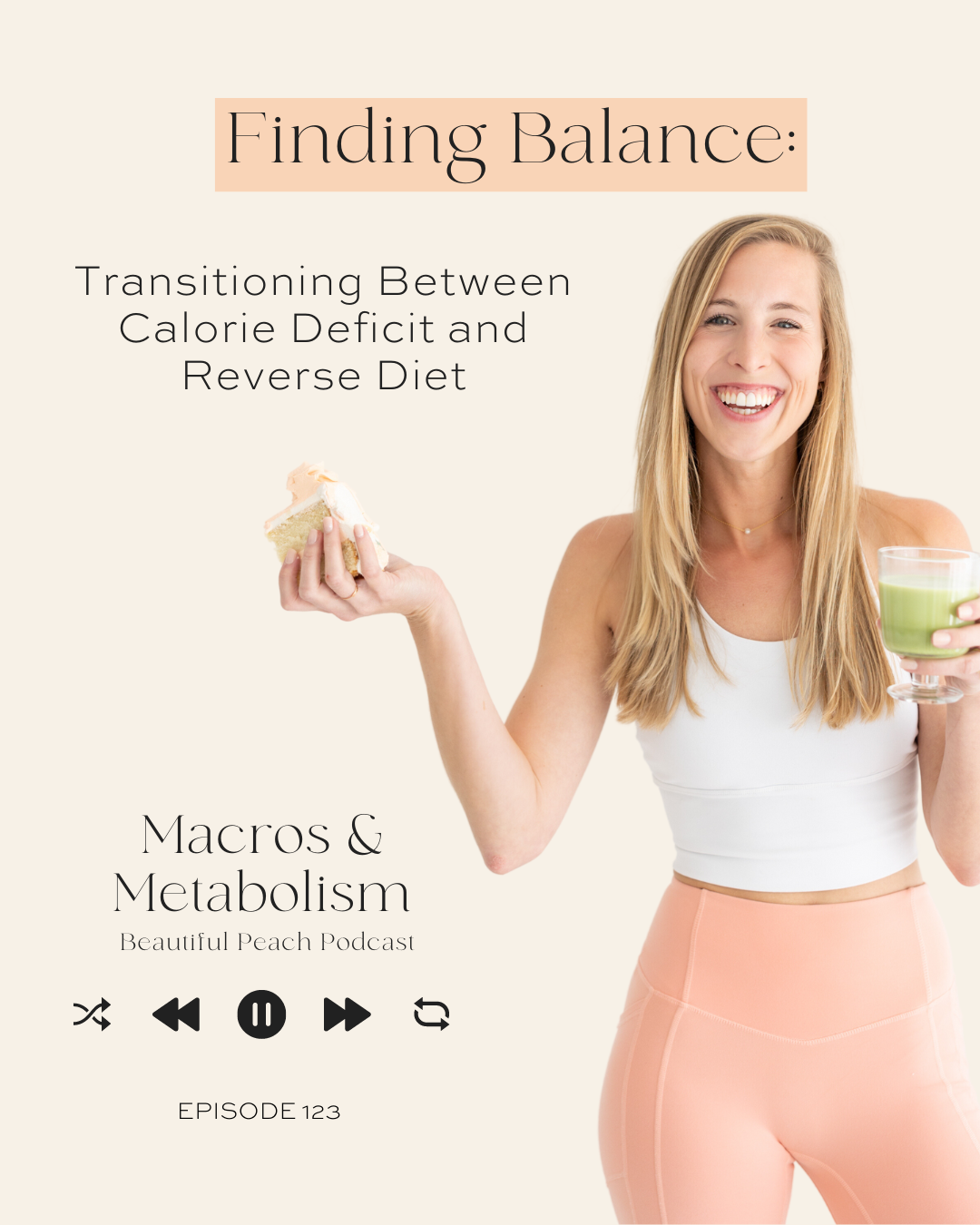
Welcome, everyone! Today, we’re going to discuss whether you need to create a calorie deficit after your reverse diet. This question comes up repeatedly, so I thought it would be a great topic for a full podcast episode. We’ll discuss calorie deficits, transitioning into calorie deficits after reverse dieting, and if you should go into a reverse diet after a calorie deficit.
It’s a rainy day here, which seems to be a recurring theme when I record these episodes. I’m wrapped in my cozy blanket, ready to dive into our topic.
So, let’s begin.
Many women tend to focus intensely on the calorie deficit itself, on losing weight quickly, and on rushing through the reverse diet to cut calories and start losing weight. This mindset is understandable, given the excitement of seeing physical changes. However, it’s also important to acknowledge how long it took for your body to reach its current state. If you’ve been restricting calories for five, ten, or even thirty years, your body may need some time to heal.
Now, let’s discuss what happens to our body when we are reverse dieting. When we’re in a long calorie deficit, our body adapts to the intake of what we’re eating. For instance, if our body works best at 2,400 calories, but we’re consuming only 1,200, we’re missing out on an additional 1,200 calories that our body needs to function optimally. This deprivation is like expecting our body to operate at 100% with only 50% of its battery power.
What does our body do in this situation? It starts to reduce energy to certain systems that aren’t necessary for survival, like libido. So, when we decide to reverse diet, we’re aiming to get our body back to that 100% battery power.
However, reverse dieting isn’t an instant fix. It’s a slow and steady process. If we’ve spent years dieting, we can’t expect our bodies to heal overnight.
When we finish the reverse diet, our bodies are functioning at their best. They are no longer in survival mode, fearing another period of calorie restriction. They are calm, regulated, and feeling good. When we go into a calorie deficit after reverse dieting, it barely impacts how we feel because our bodies are working at a much higher percentage of energy level.
In conclusion, reverse dieting is about healing our bodies from the inside out. It takes time and patience, but the results are worth it. We can enjoy a healthy metabolism, regulated bodily systems, and a better relationship with food.
So, let’s be the tortoise, not the hare, and give our bodies the time they need to heal.
That’s all for today. Thanks for tuning in!